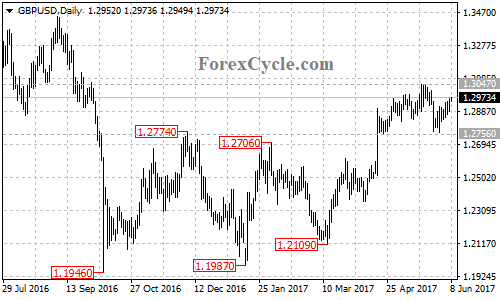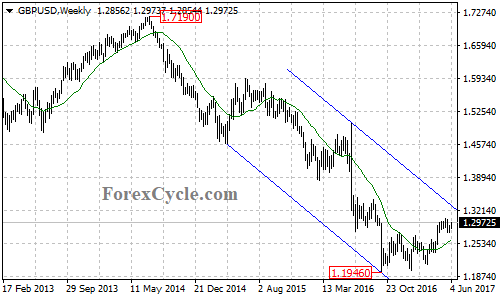GBPUSD moved sideways in a trading range between 1.2756 and 1.3047. As long as the pair is above 1.2756 support, the sideways movement could be treated as consolidation of the uptrend from the March 14 low of 1.2109, and further rise could be expected after the consolidation. Near term resistance is at 1.3047, a break of this level could signal resumption of the uptrend.

The targets of the uptrend
There is a bearish price channel on its weekly chart with resistance at the top trend line now at around 1.3330, this would be the first target of the uptrend. A clear break above the channel resistance could take price to the next upside target at 1.3950 which is the 38.2% Fibonacci retracement taken from the July 2014 high of 1.7190 to the October 2016 low of 1.1946.

On the downside
As long as the GBPUSD pair is in the bearish channel on the weekly chart, the price action from 1.1946 could be treated as consolidation of the long term downtrend from 1.7190. A breakdown below the 1.2756 support will indicate that the short term uptrend from 1.2109 had completed at 1.3047 already, then another fall to test the 1.1946 major support could be seen, below this level will confirm that the long term downtrend from 1.7190 has resumed, then the following downside movement could bring price into 1.1100 zone.
Technical levels
Support levels: 1.2756 (near term support), 1.2600 (20-week moving average), 1.1946 (October 2016 low), 1.1100.
Resistance levels: 1.3047 (near term resistance), 1.3330 (the top trend line of the price channel on weekly chart), 1.3950 (the 38.2% Fibonacci retracement).

